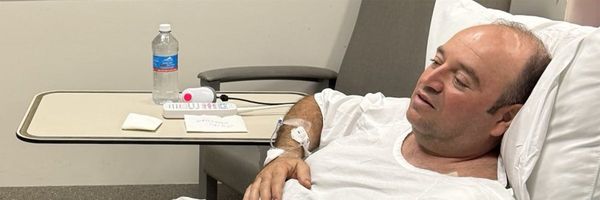Damien Isoard abandoned his search for leafy sea dragons soon after dipping into the ocean at Lucky Bay.
The famed location, east of Esperance on Western Australia's south coast, is known for its powder white sand, beach-hopping kangaroos and turquoise-blue water.
But Mr Isoard, a local scuba diver, said the amount of beer bottles and old fishing gear he found littered across the ocean floor was a jarring contrast to the area's pristine image.
"It gave me a bit of a shock," he said.
"You'd be swimming along the rocks and you'd see some corals and fish and just between the rocks you'd see heaps of bottles.
"Which I guess is just people drinking on the rocks and [thinking], 'Oh yeah, it will be fun to throw the bottle in the water'.
"It's just the amount of it that was kind of astonishing. It was just everywhere."
'Disgusting' rubbish hard to collect
Esperance resident Karen Milligan has been diving the leafy sea dragon hotspot, at the western side of Lucky Bay near the campground, for about 18 years.
She agreed it had deteriorated, which she believed was because more tourists were losing fishing gear and dropping beer bottles from the rocks above.
"It's beyond our capacity to collect [all the rubbish] — that's just how much there is," she said.
"It's just increased to a point where it's just absolutely disgusting now."
While she said she often saw fishing gear at other locations around the Recherche Archipelago, she said the Lucky Bay site had more, as well as lots of bottles.
Protection could create ecotourism opportunities
Both divers hope the architects of the proposed South Coast Marine Park, which could span from Bremer Bay to the West Australian border, will find a way to combat the issue.
Ms Milligan, who sits on the park planner's community reference committee, believes the spot should be protected from fishing.
"Not the whole of Lucky Bay — just that little point," she said.
"It attracts a huge number of international divers looking for leafy sea dragons."
She said that could create opportunities for ecotourism, research and education, particularly in how to interact with the area's wildlife.
Ms Milligan also believed it was important the park recognised places important to divers and swimmers.
Mr Isoard also said the marine park could be an opportunity to address the issue.
"It's something that should definitely be taken into consideration for the marine park," he said.
"Lucky Bay is definitely one of the places where there is pressure on marine life.
"[And] it's just a bit sad to see the state of the sea floor in one of the most beautiful beaches of Esperance, which is renowned in all of Australia, which is in the middle of a national park."
Photos 'really useful'
Esperance Tjaljtraak Native Title Aboriginal Corporation coordinator Jennifer Lavers said marine debris had a habit of accumulating in places that were "out of sight, out of mind", such as the Lucky Bay sea floor.
"It actually takes an event like this to shine a bit of a spotlight on the fact that that might be one of those hotspots," she said.
"So it's really useful that those images have been brought to light."
But Dr Lavers said while the marine park should create opportunities to address the problem, other strategies would be needed.
"Simply calling something a marine park or national park doesn't fix and protect it from everything," she said.
She said Esperance Tjaltjraak was working to raise awareness and planned on bringing in a behavioural specialist to help brainstorm ways to combat the issue.
Jennell Reynolds, who is involved with the Esperance Tjaltjraak ranger program and is an artist, said littering was a constant issue throughout the region's national parks.
She said this year the rangers and a local arts group planned on running a marine debris-inspired art show, designed to get people thinking about their habits.
An 'ongoing challenge'
A spokesperson for the Department of Biodiversity, Conservation and Attractions (DBCA) said marine park planners were striving for a balanced approach to managing biodiversity, allowing for "ecologically sustainable recreational and commercial activities".
The spokesperson said once a marine park was established, the department would work with local stakeholders and partners to collect marine debris along coastlines.
"Rubbish disposal and dumping is an ongoing challenge for all land and water managers," the spokesperson said.
The spokesperson said there were 40 bins within Cape le Grand National Park and it was investigating other waste management options such as recycling.
The fine for littering within national parks is a $200 modified penalty, with a maximum penalty of $2,000.







